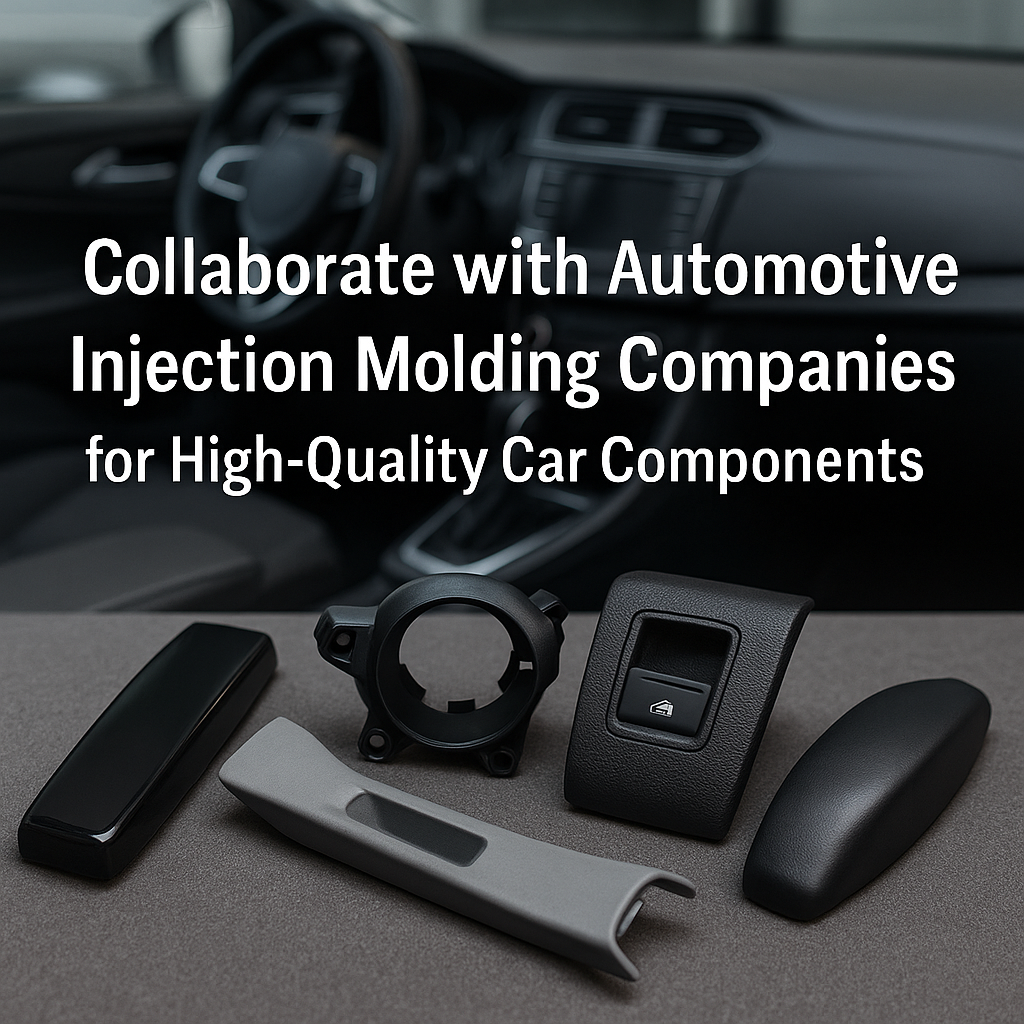Collaborate With Automotive Injection-Molding Companies for High-Quality Car Components
Collaborate With Automotive Injection-Molding Companies for High-Quality Car Components
In modern vehicle programs, lightweighting, precision fit, and flawless surface quality are non-negotiable. Partnering with a specialised automotive injection-molding company lets OEMs and Tier-1 suppliers meet stringent performance, cosmetic, and regulatory targets—while compressing launch timelines and total cost of ownership (TCO). Below is a practical framework for engineering, procurement, and program-management teams who need to secure best-in-class plastic parts for interior, exterior, and under-the-hood assemblies.
1 Why Automotive-Focused Molders Outperform Generic Suppliers
| Automotive Capability | What It Delivers | Why It Matters |
|---|---|---|
| IATF 16949 Quality System | Process-capability studies (CpK ≥ 1.67), APQP, PPAP, IMDS | Passes OEM audits and avoids costly re-validation |
| Tooling for Class-A Surfaces | H-13/S136 steel, RHCM (rapid-heat-cool molding), gas-assist | Zero flow lines or gloss mismatch on visible trims |
| Engineering Resins & Alloys | PC/ABS, PP/EPDM-T20, 30 % GF-PA66, PEEK | High impact, UV stability, chemical resistance |
| In-Mold Color & Laser-Etch Icons | Eliminates paint for scratch-durable door switches | Reduces VOC emissions, simplifies supply chain |
| Automated Vision Inspection | 100 % check on clip integrity and knit-line position | Protects JPH (Jobs Per Hour) on final assembly lines |
2 Critical Automotive Components Perfect for Injection Molding
| Vehicle Zone | High-Quality Plastic Part | Key Requirements |
|---|---|---|
| Interior | IP bezel, cup-holder rails, seat recliner knobs | Low gloss dispersion (∆GU < 3), squeak-&-rattle free |
| Exterior | B-pillar appliqué, wheel-arch liner, pillar trim | Class-A finish, UV ΔE < 1.0 after 1 000 h |
| Lighting | LED light guide, bezel carriers | Optical clarity, tight warp (< 0.3 mm) |
| Powertrain | Air-intake manifolds, turbo duct elbows | 150 °C HDT, glycol/oil chemical resistance |
| E-Powertrain | HV battery spacer, cooling plates | UL94 V-0, dimensional stability at 120 °C |
3 Material Selection Tips for Automotive Plastics
-
Exterior Black Parts → High-flow, UV-stabilised PC/ABS; pigment masterbatch with carbon-black content < 0.8 % to avoid swirl.
-
Under-Hood Heat Zones → 30 % glass-filled PA 6T or PPS for 200 °C continuous exposure.
-
Low-Friction Sliding Rails → 15 % PTFE-filled POM with MOS₂ for coefficient of friction ≤ 0.15.
-
Structural Hybrid Parts → Glass-mat thermoplastic (GMT) over-molded with PP to trim 30 % weight vs. steel.
-
Charging-Port Doors → ABS/ASA to combine paint-free color stability with impact at -30 °C.
4 Process & Validation Roadmap
| Phase | Automotive Deliverable | Typical Lead Time* |
|---|---|---|
| Kick-Off & DFM | Shared GD&T, gate selection, Moldflow warpage report | 5 working days |
| Tool Design & Cut | 2D / 3D tool approval, FMEA, cooling analysis | 4–6 weeks |
| T-Sample Trials (T0/T1) | First-article run, dimensional scan, DOE window | 1–2 weeks |
| PPAP (Level 3) | 30-piece dimensional study, CpK, material CoA, IMDS | 1 week |
| Ramp & SOP Support | Run-at-rate, ongoing SPC, annual re-validation | Continuous |
*Lead times for a P20 single-cavity tool; multi-cavity steel may extend 2–3 weeks.
5 KPIs to Include in Your Supplier Agreement
| KPI | Target | Monitoring Tool |
|---|---|---|
| CpK on Critical Dimensions | ≥ 1.67 | SPC dashboard with real-time cavity data |
| First-Pass Yield (FPY) | ≥ 98 % | Automated vision + poka-yoke fixtures |
| On-Time-In-Full (OTIF) | ≥ 95 % | EDI/API linkage to your ERP |
| ECO Turnaround | ≤ 5 days for steel-safe mods | Digital mold data & rapid EDM |
| Warranty PPM | ≤ 50 PPM over 12 months | Field-failure traceability |
6 Case Snapshot—Interior Trim Supplier Switch
| Metric | Previous Vendor | Automotive-Grade Partner via TaiwanMoldMaker.com |
|---|---|---|
| Cosmetic Rejects | 3.1 % | 0.6 % |
| Door-line Fit Gap | 1.2 mm ± 0.7 | 0.8 mm ± 0.2 |
| Launch Delay | 4 weeks | On schedule |
| Warranty (24 mo) | 210 PPM | 38 PPM |
| Net Cost (tool + part) | Baseline | –14 % TCO |
7 Why Source Automotive Moldings via TaiwanMoldMaker.com?
-
IATF-Certified Network – Only suppliers with proven CpK charts, IMDS capability, and PSW-ready PPAP packages.
-
Rapid DFM & Cost Packs – 48 h comparisons of hot-runner selection, GF percentages, and cavity layouts.
-
Tool-Tryout Coordination – Virtual or on-site witness runs, complete with torque & scratch-test stations.
-
Bridge-to-Scale Credits – Prototype tools credited toward multi-cavity H13 steel after DV/PV approval.
-
Supply-Chain Integration – EDI, ASN, and QR-code lot tracking for just-in-sequence (JIS) delivery lines.
8 Action Plan—Lock in High-Quality Car Components Today
-
Define CTQs & Warranty Targets → Create a load-case matrix for each part family.
-
Upload 3-D & Specification PDFs to TaiwanMoldMaker.com for a curated supplier shortlist.
-
Review DFM & Cost Reports → Select 2 finalists; schedule plant audits or virtual line walks.
-
Award Prototype Tooling → Validate fit, finish, and CpK in ≤ 6 weeks.
-
Negotiate SLA-Backed SOP Contract → Include OTIF, ECO, and cost-down milestones.
Key Takeaways
-
Automotive injection-molding experts offer certified quality systems, materials mastery, and process discipline—essential for zero-defect car components.
-
Prioritise suppliers with IATF 16949, scientific molding, and real-time SPC to safeguard launches and warranties.
-
Using a platform like TaiwanMoldMaker.com compresses supplier vetting, tool launch, and PPAP approval—so you reach SOP on time and on budget.









